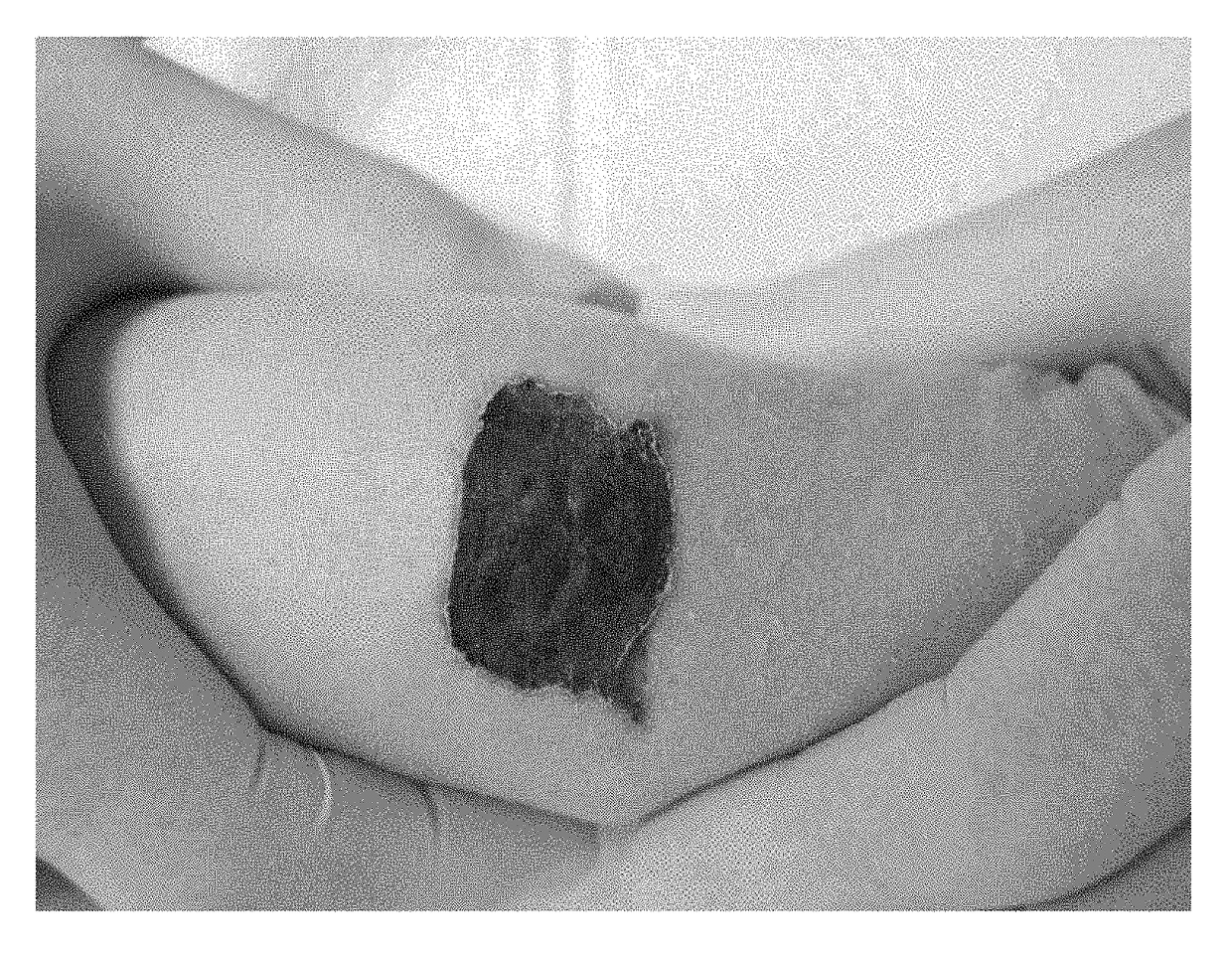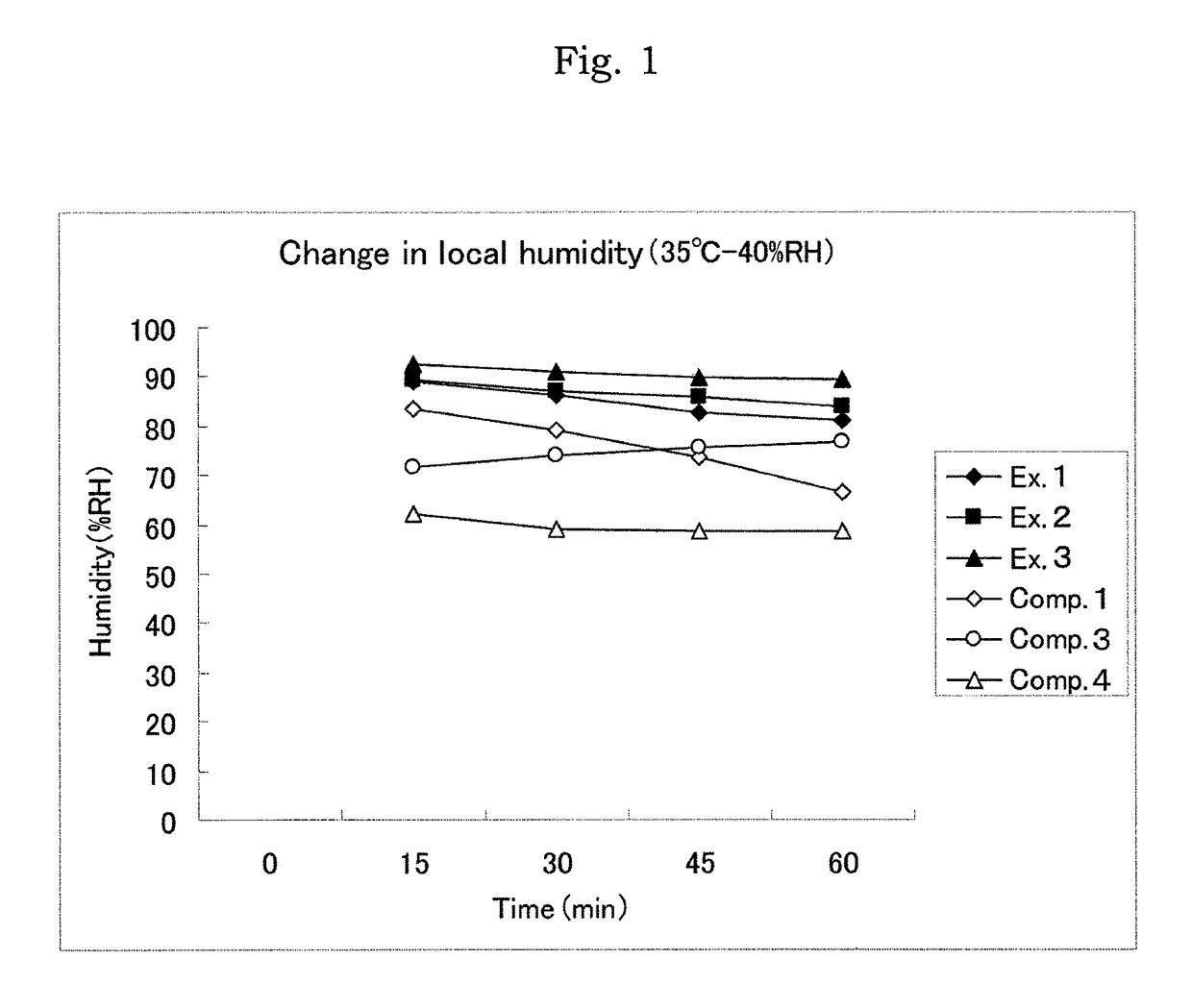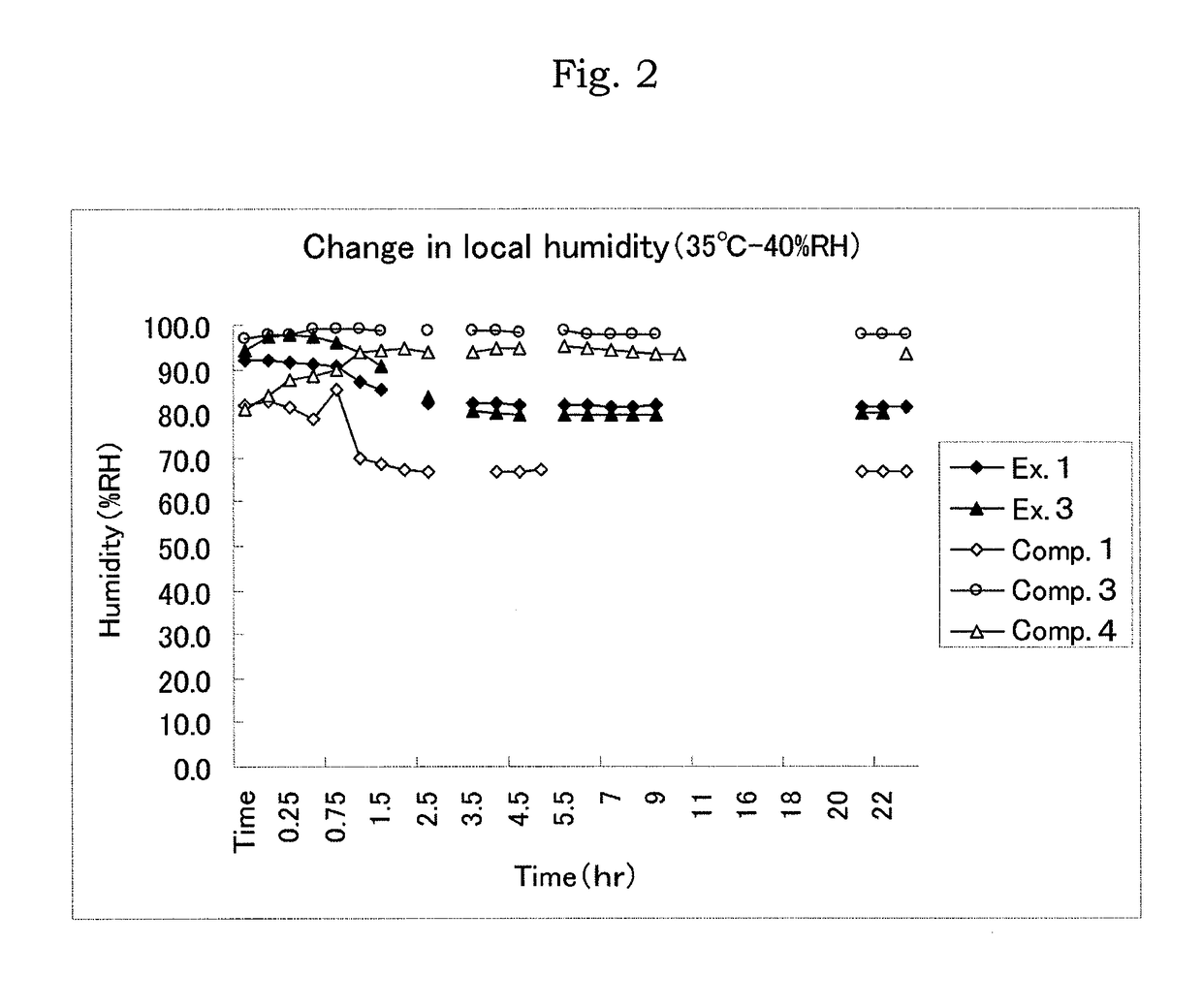Method for using hydrogel sheet for treating wound
a technology of hydrogel and wounds, applied in the field of wounds treated with hydrogel sheets, can solve the problems of hydrogel lack of self-adhesiveness and stretchability, difficulty in evaluating the actual wound depth, etc., and achieve the effects of preventing maceration of healthy skin, promoting wound healing, and appropriate moisture environmen
- Summary
- Abstract
- Description
- Claims
- Application Information
AI Technical Summary
Benefits of technology
Problems solved by technology
Method used
Image
Examples
example 1
[0071]1.6 g of carboxy vinyl polymer was dissolved into an appropriate amount of purified water, then 20 g of D-sorbitol solution was added thereto, and mixed until a homogeneous mixture was obtained. Furthermore, 0.3 g of polyacrylic acid, 1.2 g of tartaric acid, 20.7 g of concentrated glycerin, 3.5 g of carmellose sodium, 4 g of partially neutralized polyacrylate, 0.1 g of anhydrous silicic acid, 1.5 g of castor oil, 0.07 g of dihydroxyaluminum aminoacetate, 0.08 g of disodium edetate, and an appropriate amount of purified water were homogeneously mixed to prepare a hydrogel. This hydrogel was spread on urethane (20 μm) / nylon elastomer (25 g / m2) and the gel surface was covered with a polyester film to form a hydrogel sheet.
example 2
[0072]A hydrogel was prepared by the same method as Example 1, the backing was replaced with urethane (20 μm) / nylon tricot, the hydrogel was spread on the backing, and the gel surface was covered with a polyester film to form a hydrogel sheet.
example 3
[0073]0.5 g of anhydrous silicic acid was dissolved into an appropriate amount of purified water, then 1.0 g of urea, 0.08 g of disodium edetate, and 0.5 g of castor oil were added thereto, and mixed until a homogeneous mixture was obtained. Furthermore, 15.0 g of 20% polyacrylic acid aqueous solution, 0.3 g of tartaric acid, 16.0 g of concentrated glycerin, 4.0 g of carmellose sodium, 5.0 g of partially neutralized polyacrylate, 0.06 g of magnesium aluminometasilicate, 0.02 g of dried aluminum hydroxide gel, and an appropriate amount of purified water were homogeneously mixed to prepare a hydrogel. This hydrogel was spread on urethane (20 μm) / nylon elastomer (25 g / m2), and the gel surface was covered with a polyester film to form a hydrogel sheet.
[0074]
TABLE 1Ingredient(% by weight)Ex. 1Ex. 2Ex. 3Comp. 1Comp. 2Anhydrous0.10.10.50.10.1silicic acidPolyacrylic0.30.3—0.30.3acidCarboxy vinyl1.61.6—1.61.6polymerD-sorbitol2020—2020solutionConcentrated20.720.71620.720.7glycerinCarmellose3....
PUM
| Property | Measurement | Unit |
|---|---|---|
| angle | aaaaa | aaaaa |
| area | aaaaa | aaaaa |
| constant load elongation rate | aaaaa | aaaaa |
Abstract
Description
Claims
Application Information
 Login to View More
Login to View More - R&D
- Intellectual Property
- Life Sciences
- Materials
- Tech Scout
- Unparalleled Data Quality
- Higher Quality Content
- 60% Fewer Hallucinations
Browse by: Latest US Patents, China's latest patents, Technical Efficacy Thesaurus, Application Domain, Technology Topic, Popular Technical Reports.
© 2025 PatSnap. All rights reserved.Legal|Privacy policy|Modern Slavery Act Transparency Statement|Sitemap|About US| Contact US: help@patsnap.com



